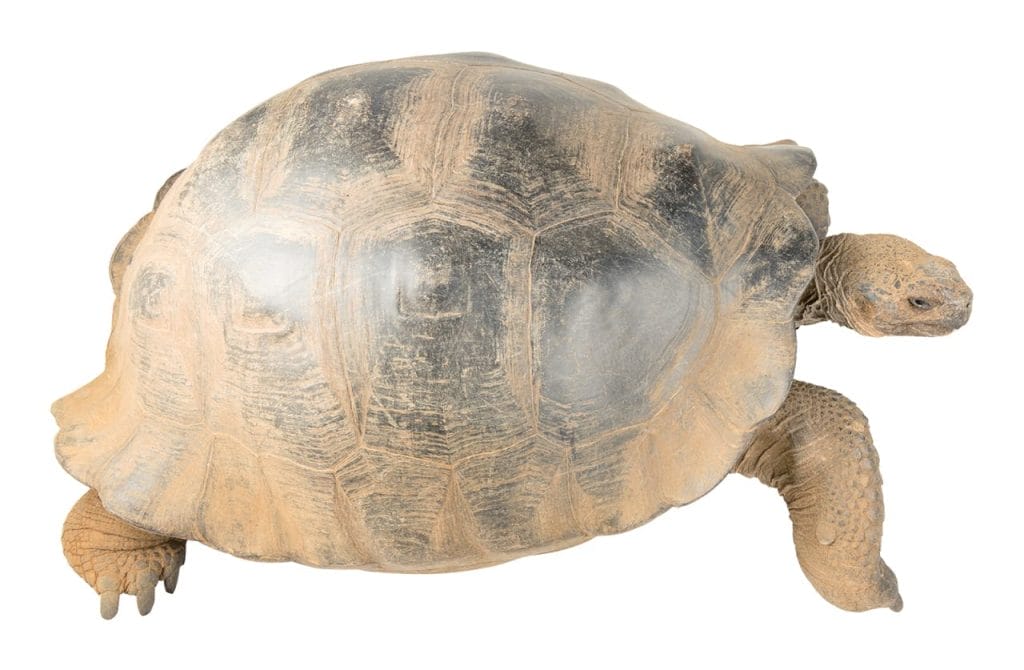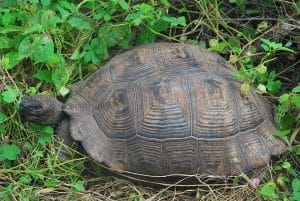Chelonoidis darwini (Santiago Island Tortoise)
Home > Turtle Database > Chelonoidis darwini (Santiago Island Tortoise)
Chelonoidis darwini, commonly known as Santiago Island Tortoise, is a unique species of tortoise native to the Galápagos Islands. Renowned for its historical connection to Charles Darwin, this species is a symbol of evolution and conservation efforts.
Native To These Regions
Santiago Island (Ecuador)Native Turtle Species Map – Find Turtles by Region
Scientific Classification
- Kingdom: Animalia
- Phylum: Chordata
- Class: Reptilia
- Order: Testudines
- Family: Testudinidae
- Genus: Chelonoidis
- Species: Chelonoidis darwini
Common Names
- Santiago Island Tortoise
- Santiago giant tortoise
- James Island tortoise
This Hilarious Turtle Book Might Know Your Pet Better Than You Do
Let’s be real—most turtle care guides feel like reading a textbook written by a sleep-deprived zookeeper.
This one’s not that.
Told from the snarky point of view of a grumpy, judgmental turtle, 21 Turtle Truths You’ll Never Read in a Care Guide is packed with sarcasm, sass, and surprisingly useful insights.
And hey—you don’t have to commit to the whole thing just yet.
Grab 2 free truths from the ebook and get a taste of what your turtle really thinks about your setup, your food choices, and that weird plastic palm tree.
It’s funny, it’s honest, and if you’ve ever owned a turtle who glares at you like you’re the problem—you’ll feel seen.
Identification
Description
Chelonoidis darwini is a large tortoise species, characterized by its dome-shaped shell that can reach up to 5 feet in length. The tortoise has sturdy, columnar legs and a wrinkled, leathery skin. Its color ranges from dark brown to black, providing camouflage in its natural habitat.
Sexual Dimorphism
Males are generally larger than females and possess longer, thicker tails. Males also have a concave plastron (the underside of the shell) to assist with mating, while females have a flatter plastron.
Check more turtles from the Chelonoidis genus
Native Origin and Distribution
Geographical Range
Chelonoidis darwini is native to the Galápagos Islands, specifically found on the islands of Santiago, Española, and Pinta, among others. These islands are located about 600 miles off the coast of Ecuador in the Pacific Ocean.
Preferred Habitat
This species thrives in a variety of habitats, from arid lowlands to humid highlands. They prefer areas with abundant vegetation, which provides both food and shelter. During the cooler months, they may migrate to higher elevations to find more suitable temperatures.
Behavior
Feeding Habits
Darwin’s tortoises are primarily herbivorous, feeding on grasses, leaves, fruits, and cacti. They have slow metabolisms, allowing them to go for long periods without food or water. Their diet can vary based on the availability of vegetation.
Predators
Adult Chelonoidis darwini have few natural predators due to their large size and tough shells. However, young tortoises are vulnerable to predation by introduced species such as rats, pigs, and dogs.
Reproduction
Breeding Season
The breeding season for Chelonoidis darwini typically occurs during the warmer months, from January to August.
Reproductive Method
Females lay clutches of 2 to 16 eggs in shallow nests dug into the soil. After laying, the eggs are covered and left to incubate naturally. The incubation period lasts around 120 to 140 days, depending on environmental conditions. Hatchlings emerge and are independent from birth.
Conservation
Extinction Status
Chelonoidis darwini is classified as Vulnerable by the IUCN Red List due to its declining population, primarily caused by human activities and introduced species.
Threats
The main threats to this species include habitat destruction, poaching, and competition with introduced species. Additionally, invasive species that prey on eggs and juveniles pose significant risks to population recovery.
Conservation Measures
Efforts to conserve Chelonoidis darwini include habitat protection, breeding programs, and the eradication of invasive species. Conservationists also focus on educating the public and promoting sustainable tourism in the Galápagos Islands.
Economic Importance
Chelonoidis darwini is of significant economic importance to the Galápagos Islands, as it is a major attraction for eco-tourism. The species also plays a critical role in maintaining the island ecosystems by aiding in seed dispersal and vegetation control.
Interesting Facts
- Charles Darwin’s observations of these tortoises contributed to the development of his theory of natural selection.
- Chelonoidis darwini can live for over 100 years, making them one of the longest-living vertebrates.
- The shape of their shells varies between islands, an adaptation to the different environments in the Galápagos archipelago.

About Author
Muntaseer Rahman started keeping pet turtles back in 2013. He also owns the largest Turtle & Tortoise Facebook community in Bangladesh. These days he is mostly active on Facebook.















